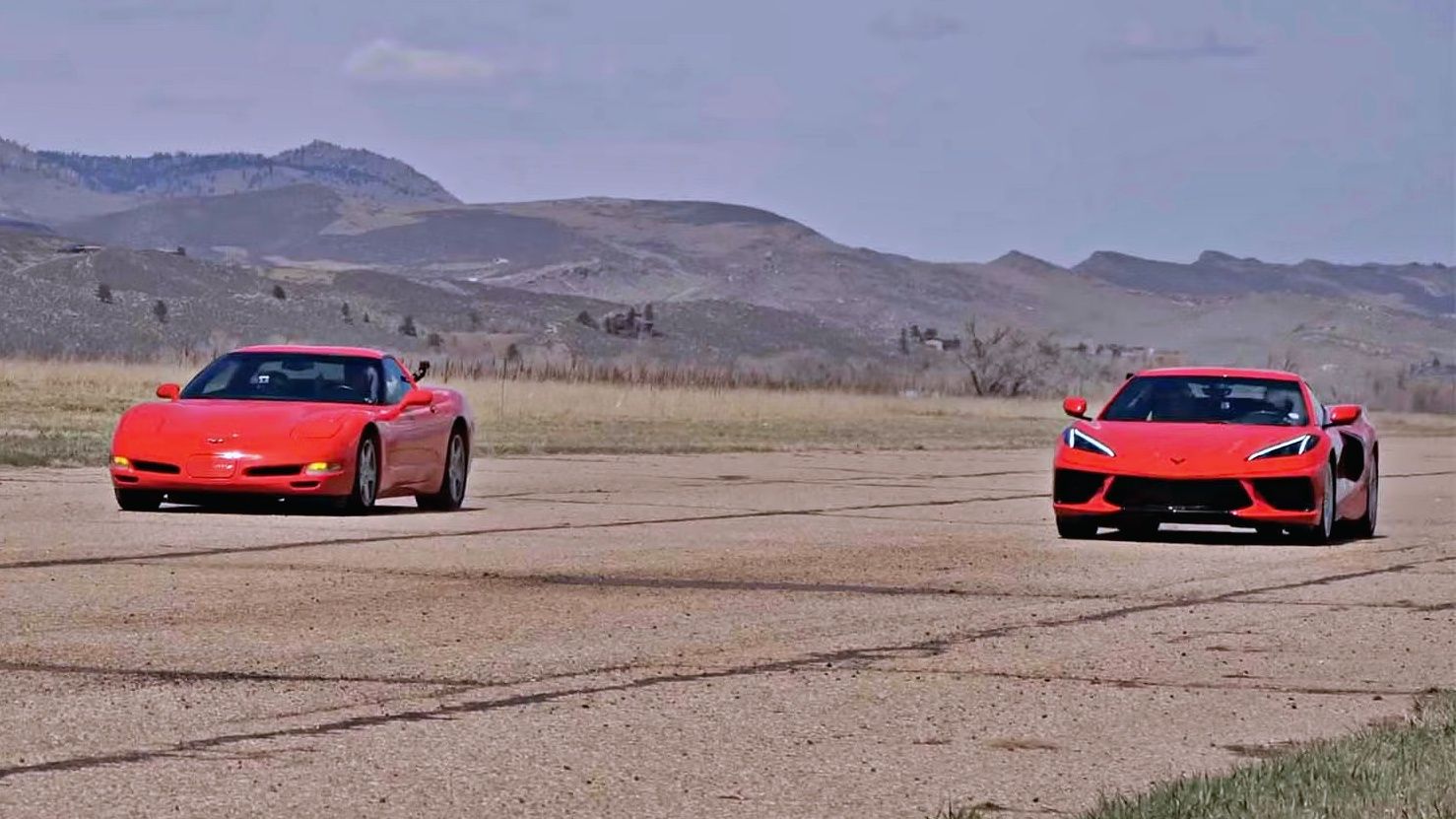Buying a used car instead of a new one could be one of the best and smartest financial decisions you could ever make. Sure, the risks of damages or poor maintenance from the previous owner/s are there, but if you strike gold and manage to snag a used car that was well taken care of, you've freed yourself from the pain of depreciation. For today's video courtesy of The Fast Lane Car, we take a look at the C5 Corvette versus the current C8 Corvette and whether it's actually worth spending five times more for the new, more potent 'Vette.
More Than 20 Years Of R&D Separate The Two 'Vettte's
Unsurprisingly, whenever a new model comes out, comparisons to the models it replaced are inevitable. So, how does a Corvette from three generations ago fare against the C8? Well, each succeeding Corvette generation wasn't radically different up until the bridge between the C7 and C8. The C8 broke the mold of what a Corvette should be--a front-engined American sportscar with the heart of a muscle car. By moving the engine at the back and giving at a design that placed it alongside the best of Europe's rear mid-engined sportscars, the C8 was a complete ground-up overhaul of the Corvette recipe. It's so radically different that it could've had a completely new nameplate altogether.
With more than 20 years' worth of R&D expertise separating the two Chevy sportscars, the C8 Corvette obliterates the C5, which first came out in 1997. The 6.2-liter V-8 of the C8 produces 490 horsepower and is hooked up to a sophisticated eight-speed dual-clutch transmission, while the C5 Corvette's 5.7-liter V-8 produced 345 horsepower (later increased to 350 horsepower in 2001) and is hooked up to an ancient four-speed automatic. The rear mid-engine layout of the C8 also means that as the weight shifts towards the rear when launching, the rear wheels are able to hook up to the ground for traction much better than the C5. As a result, the C8 Corvette completes the quarter mile in 12.8 seconds at 113 mph, while the C5 Corvette crosses the line in 15.5 seconds at 99 mph.
It's the same scenario when it comes to a quarter mile with a rolling start, but when it comes to braking from 60 mph, the gap between the two cars is surprisingly small. The C8 Corvette obviously stops shorter at 95 feet, but the C5 Corvette's 112 feet braking distance isn't too far off. Where the gap between the two cars narrows down even further is when it comes to the engine sound. Both cars' V-8s are naturally aspirated, which means there's no forced induction or electrification to dilute their exhaust notes. The C8 sounds ever-so-slightly better, but the C5 is probably 90 percent as good as the C8's engine note.
For $14,000, We'd Rather Get This Over A Brand-New Mirage
When considering how much the C5 Corvette costs, it actually performed extremely well--especially for a sportscar whose engine is held back by its four-speed automatic and more importantly, only costs around $14,000--about a fifth of the C8 Corvette's $61,900 current base price ($82,115 as tested). A brand-new, factory-fresh Mitsubishi Mirage costs about $16,000 for a base version with barely any luxuries, but it won't be able to hold a candle next to a C5 Corvette.




